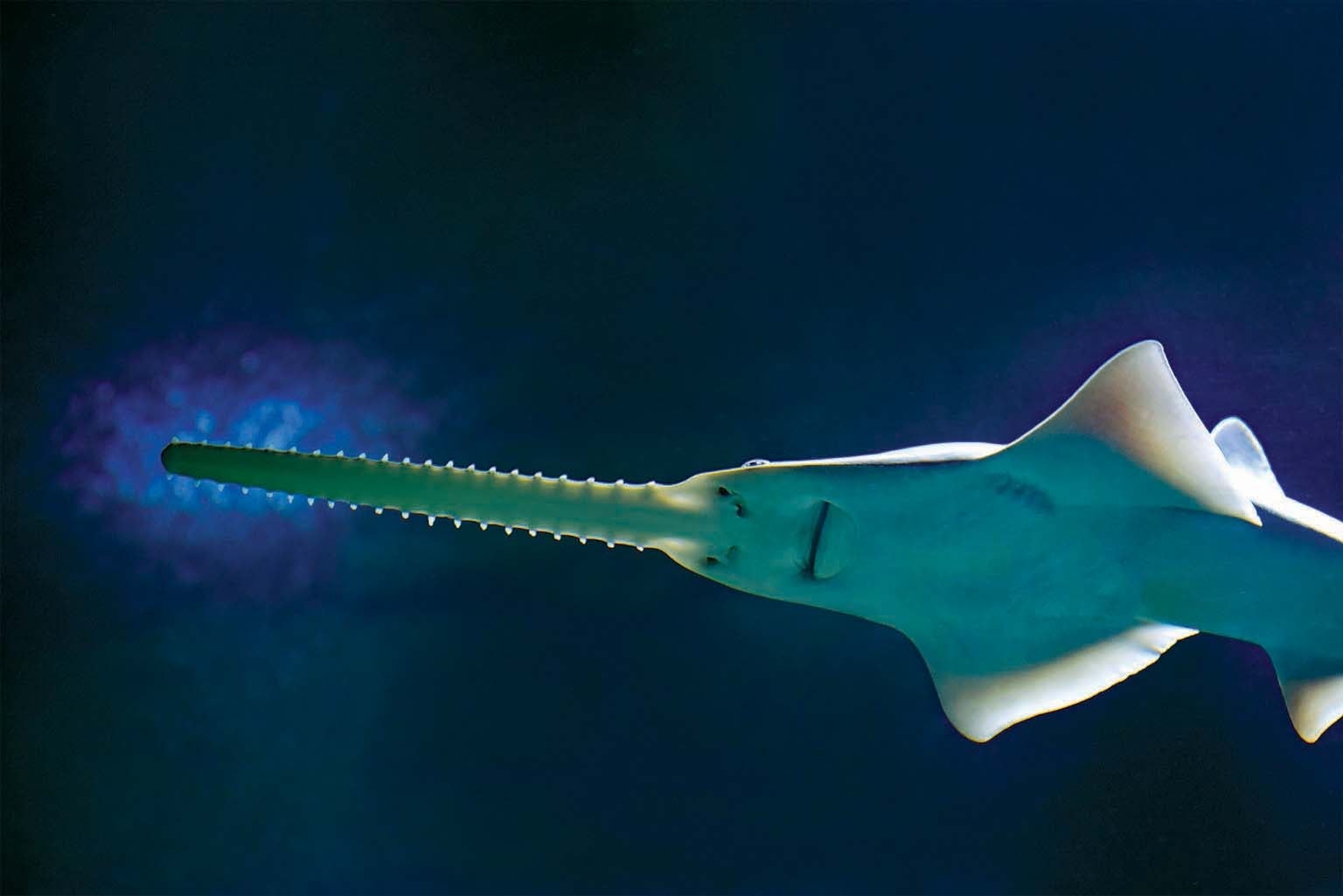
You probably don’t think of yourself as a scaly creature, but the hardened structures behind your lips may say otherwise. New analysis of one of the world’s weirdest animals—the sawfish—supports the idea that teeth first appeared when ancient fishes’ body scales migrated into their mouths about 400 million years ago.
Early teeth offered jawed fish a major evolutionary boost. “If you’re feeding, unless you’re sucking in really small plankton-type stuff, there are definitely advantages to being able to grab hold of objects in the mouth,” says Per Ahlberg, a paleontologist at Uppsala University in Sweden, who was not involved in the new study. Biting was a big leap forward; chewing, Ahlberg notes, came later. And all toothed animals living now—from trout to humans to crocodiles—appear to have descended from a single group of jawed fish, says University of Chicago paleontologist Yara Haridy, who was also not involved in the research.
But scientists have conflicting ideas about the source of the earliest teeth. Hard, protective body scales, made of mineralized tissue such as dentine or enamel, could have migrated into the mouth—a hypothesis known as outside-in. Or teeth could have developed internally, from the same tissue as gills, a hypothesis known as inside-out. The new sawfish study, published in the Journal of Anatomy, offers fresh evidence in favor of an outside-in origin.
The study authors gathered fossils from the extinct sawfish species Ischyrhiza mira, which lived some 70 million years ago. They analyzed the fossils’ rostral denticles, the spikes that jut from the sides of a sawfish’s snout to aid in foraging and self-defense. Rostral denticles look like teeth, but they’re actually specialized body scales.
Unlike previous studies of extinct and current sawfish, this one probed the internal structure of the scales’ hard outer layer, called enameloid. “It’s basically the primitive form of [tooth] enamel,” Haridy says.
When the researchers scratched away the outer layers of these scales with sandpaper and acid and then observed them under a scanning electron microscope, they were stunned by the level of complexity they found. The scientists had expected a homogeneous structure like that of many other body scales, says Pennsylvania State University paleontologist Todd Cook, lead author of the new study. But instead they saw distinct regions of microcrystals that resist mechanical stress. “In fact, the overall organization of the enameloid resembled that of modern shark teeth,” Cook says.
Although rostral denticles didn’t become teeth themselves—sawfish ancestors already had teeth—this discovery indicates that scales like the ones on a fish’s bodily surface have the capacity to evolve a toothlike internal structure, and they could have done so at least once before. Cook says it is less likely that such a similar structure would have developed independently from the very different internal throat tissue.
“This finding is in support of outside-in,” says Ann Huysseune, an evolutionary developmental biologist at Ghent University in Belgium, who was not involved in this study. “But I’m not surprised—it’s one of many arguments in favor.”
Ahlberg notes that an animal’s scale-forming outer body tissue meets its internal tissue somewhere around the mouth. But the exact boundary between the two is difficult to determine in ancient fish—and this boundary’s location is key to understanding which type of tissue first generated teeth. Fossils don’t preserve most soft tissue, so researchers can only make inferences about such tissue’s properties or examine present-day equivalents. For example, Huysseune studies the mouths of modern zebra fish to better understand tooth formation and origins.
To Ahlberg, it is clear that external tissue can produce complex, toothlike scales. The sawfish study is a vivid example of that mechanism in action. But can internal throat tissue, or mixed internal-external tissue close to the mouth, do the same? That’s still uncertain, Ahlberg says.
Supporters of the inside-out hypothesis say the answer is yes. For a time, Haridy says, the group’s main point of evidence was a set of eel-like creatures that had apparently developed mineralized toothlike structures in the throat and on the mouth—but nowhere else on the body. Several papers published in the 1990s and 2000s used these eels as a cornerstone of the inside-out idea, but later research suggested the structures were unique to the lineage and were unrelated to vertebrate teeth. For now scientists continue to hunt for modern analogues and fossilized examples of early prototeeth.
Pinning down the origins of teeth probably won’t immediately improve our lives in any tangible ways, Ahlberg says—although he mentions a hypothetical far-future scenario in which humans learn how to continuously regrow teeth the way most nonmammals can. “But I think it’s inherently interesting to understand how our body has come into being,” he says. “It’s this peculiar thing we inhabit, and it has evidence of a very long and strange history.”
